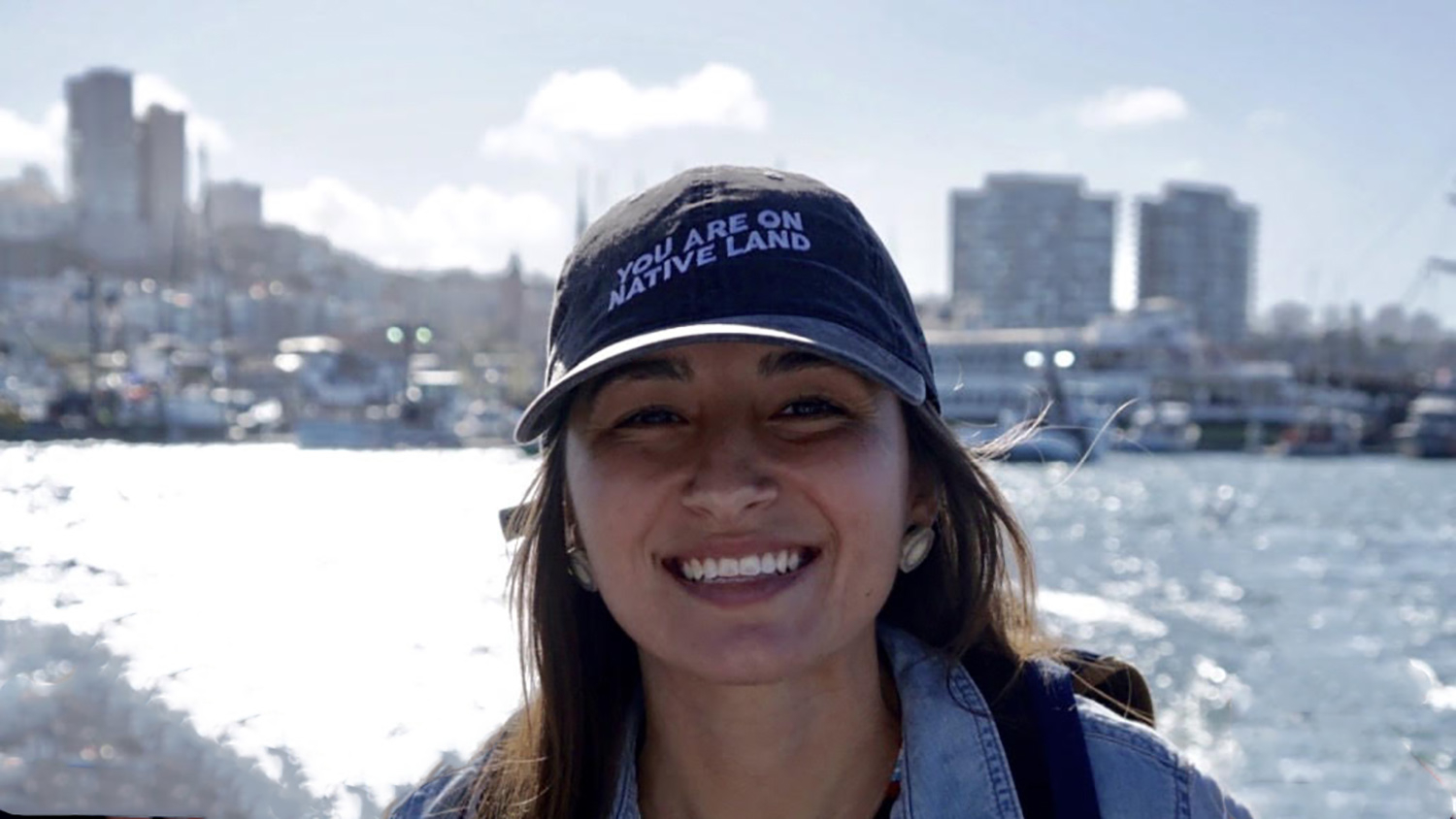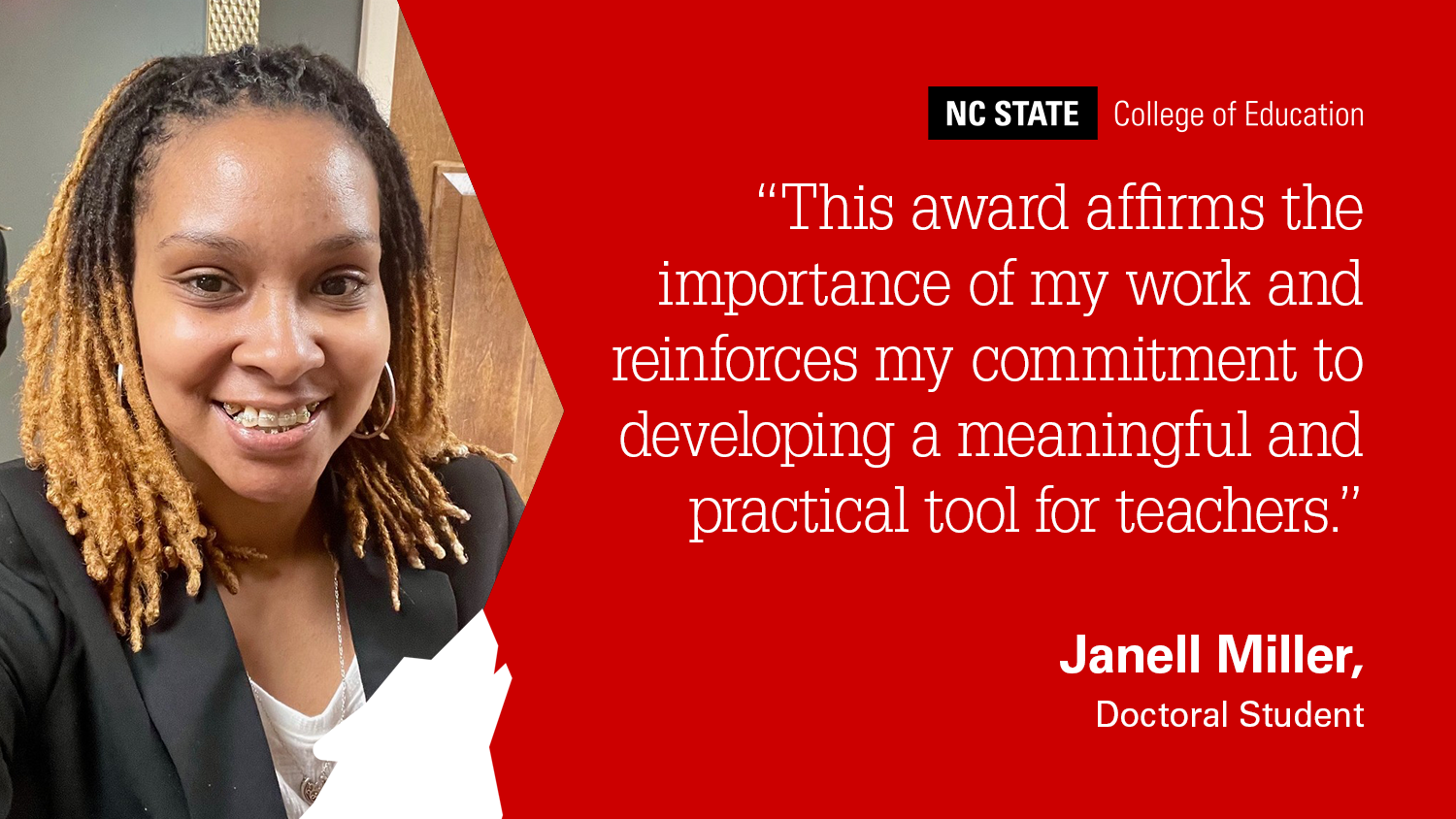New research will bring together Native American tribes and North Carolina’s state government thanks to a collaborative effort led by Jocelyn Painter, a Ph.D. student in the Department of Forestry and Environmental Resources.
Painter, who is a member of the Winnebago Tribe of Nebraska and has ancestral ties to the Santee Sioux Tribe, is working with professor Ryan Emanuel to explore the deep connection that North Carolina’s Native American tribes have to water resources.
The research initiative is a collaborative effort between the NC State College of Natural Resources, Albemarle-Pamilco National Estuary Partnership, NC Commission of Indian Affairs, NC Department of Environmental Quality, Virginia Coastal Policy Center and the Southeast Climate Adaptation Science Center.
Though Painter’s research focuses on hydrology, it goes well beyond collecting data on water resources. She ultimately hopes to improve relations between Indigenous communities and the state government by addressing tribal concerns about climate change while helping the government create actionable policies that utilize Indigenous knowledge.
“The scientific community has a history of being more extractive about information from tribal communities,” Painter explained. “It’s a goal of ours to be just as much a service to these communities as they are to us in putting together these strategies.”
Native American tribes have a deep and longstanding knowledge of the land and its many changes. This isn’t taught in courses focused on environmental policy, hydrology or environmental history. Tribes pass this knowledge down from generation to generation. “Also encoded into traditional knowledge are systems of ethics, responsibilities and perspectives on how we position ourselves in the environment,” Painter explained. Ideas such as how to take resources like water and animals, how much to take and what time of year to take them for human use are ingrained into Native American culture and practices.
Painter’s research aims to create a “knowledge loop.” First, she visits tribal communities to gain an understanding of their connection to nearby water resources and the concerns they have about climate change. Next, Painter does a literature review, reading tribal-led climate adaptation plans, searching through scholarly research and compiling it into reports. These reports will be given to the state government and, eventually, incorporated into state policies that will then be enacted on tribal land as well as across North Carolina.
Painter sees that tribes take a more holistic approach to land and water resources, combining their observations and cultural heritage. “That’s another challenge that I hope to tackle as a researcher – capturing the complexity of these Indigenous knowledge forms and doing the work to incorporate those into western science,” she said.
She hopes state policies will incorporate Indigenous knowledge, recognizing it as a deep data set and bringing in more Native American voices to address tribal climate resilience in the Albemarle-Pamlico watershed. The research team mostly collaborates with tribes that have ancestral ties to the land but don’t have federal recognition.
Giving A Voice to Tribal Governments
Native American tribes can either be recognized by the state in which they reside or by the federal government. Federal recognition provides financial support and resources to tribal communities that aren’t provided through state recognition. It also allows tribal governments to have sovereignty over their land, water and people.
Most tribes in North Carolina only have state recognition, meaning their land is ultimately governed by the state and federal government. When large federal projects involve Native land, like the installation of a pipeline, the federal government doesn’t have to get consent from tribes. “It is a best management practice to consult with tribes, but we’ve seen a tendency in the past to adhere only to the minimum legal standards when engaging with them,” Painter said.
Painter added that most tribes in the southeastern United States don’t have federal recognition. “European contact on the east coast was much more prolonged than the rest of the country and damaging policy such as the American Indian Removal Act resulted in the forced removal of many tribes from their ancestral lands,” she said. “A lot of tribes were pushed out, so there are very few tribes in the southeast that have federal recognition as compared to the rest of the country.”
In North Carolina, state recognized tribes get a seat on the state’s Commission of Indian Affairs, providing them with a small voice in climate conversations but not enough to fully incorporate Indigenous knowledge.
“There could be unique concerns that tribal communities have when it comes to climate change and how it might affect them,” Painter explained. “This is a very good opportunity to give those tribes a voice or seat at the table with water governance.”
Connecting with Tribes
A large part of the project is direct outreach with tribes. Prior to COVID-19, Painter and her team planned on visiting tribes in person, presenting at conferences and speaking about their research at pow wows. Due to equity issues around lack of access to internet and video conferencing systems, the team was concerned about connecting with tribal members. So, they got creative.
Painter and her team launched a social media campaign called #WaterStory on Indigenous Peoples Day in October to celebrate and share the complex connections tribal members have to water. Here, the team gained insight into tribes’ wishes for the water in the future, the concerns they have related to climate change and what members want to learn from the researchers. As she conducts a literature review, Painter will keep these questions in mind and will report back to the tribes with answers. “Hopefully this is more of a two-way interaction between us as researchers and the tribal communities,” she said.
The campaign is ongoing, but the research team has already received a lot of positive feedback. Emanuel shared his own water story as a member of the Lumbee tribe and the connections he made during his undergraduate degree on Twitter. Although it’s not the same as in-person meetings, Painter said this approach has shifted the way the research team thinks about outreach and public engagement. Now, she’s not only hearing from tribal leaders and governments, but the members as well. It’s given members a sense of ownership in the governing process and larger conversation around climate change.
As a scientist, Painter says it’s easy to get stuck in a cycle of researching in order to publish and wondering what good will come of the work. “I’m very excited to be involved in actionable science,” she said. “This project, for me, gives purpose to what I’m doing. I can actually see things are happening, people are being involved. I can see what happens to science after you do it.”
“Tribal communities, myself included, have this deeper cultural connection to water and land and, in a lot of instances, are disenfranchised in the processes of governing those lands and waters,” Painter added. “I think as a scientist, I have some sort of capacity to aid in bringing Indigenous knowledge to the table when it comes to policy.”
After completing her Ph.D., Painter hopes to use this experience as a road map for better connecting research entities like universities and government agencies with Indigenous people and their knowledge. “The essence of the research that I want to do and the essence of my interest in this project is to do research for native communities that is by native communities.”
This post was originally published in College of Natural Resources News.
- Categories:



